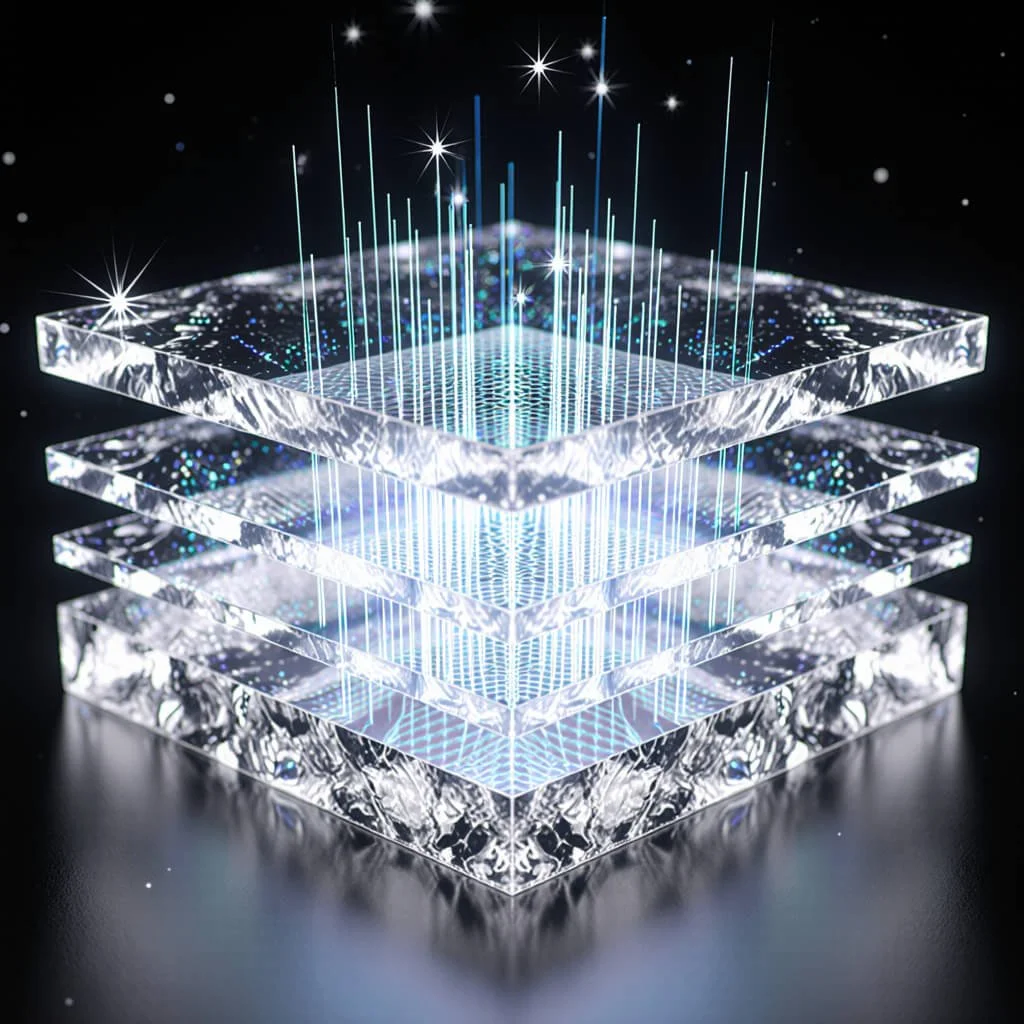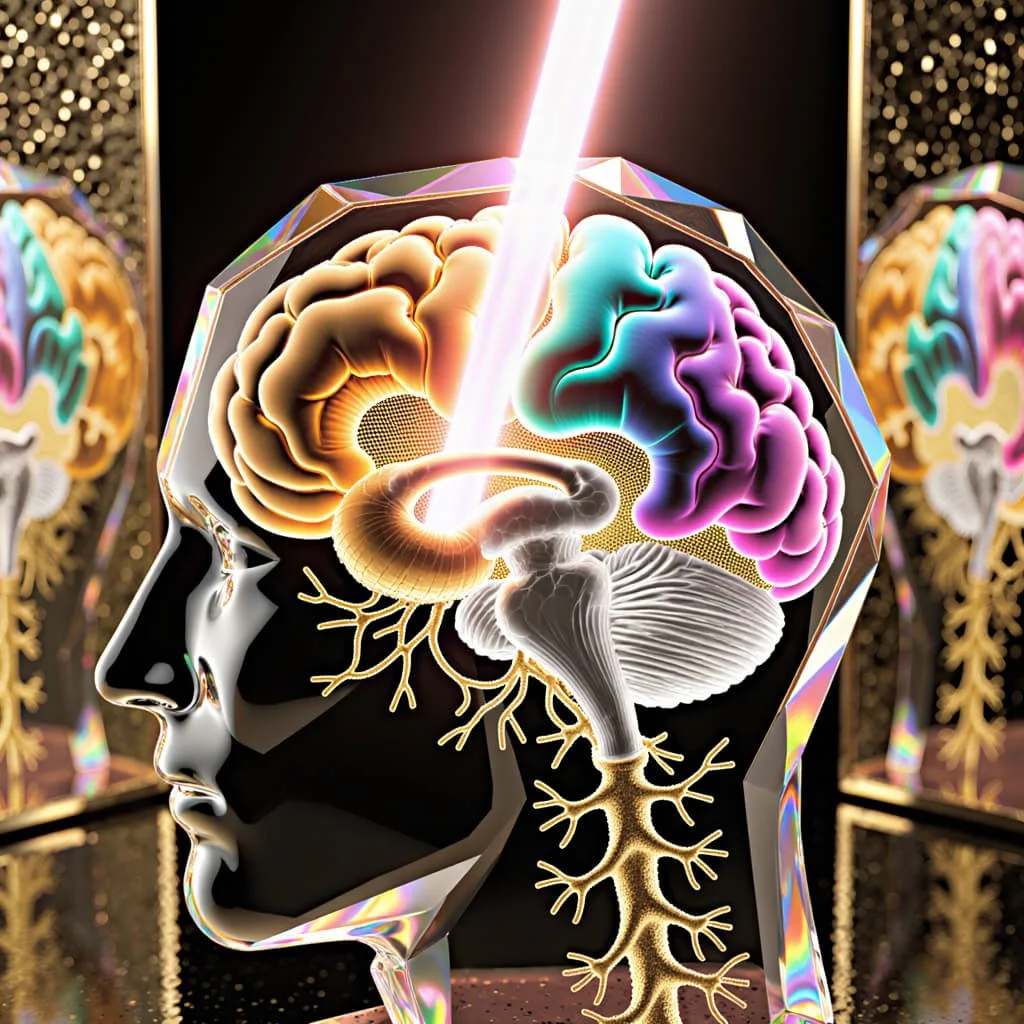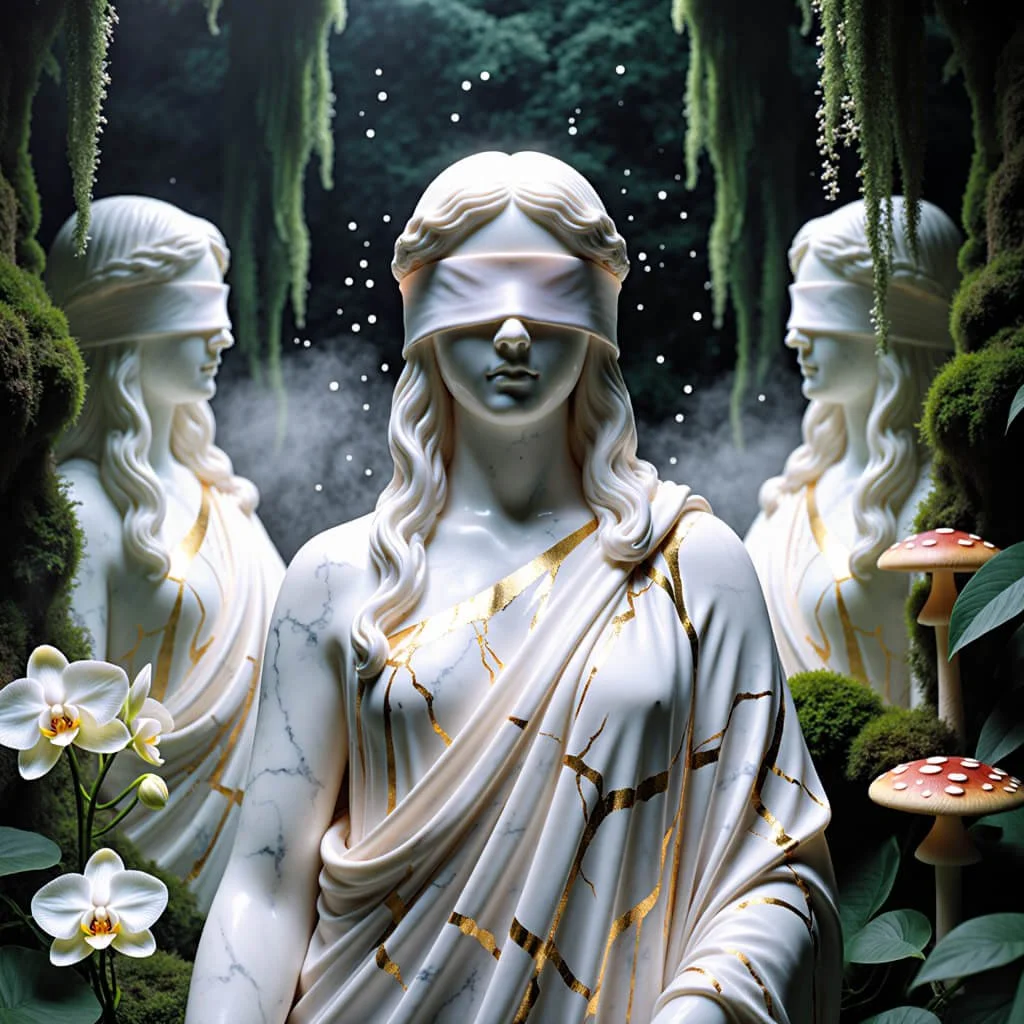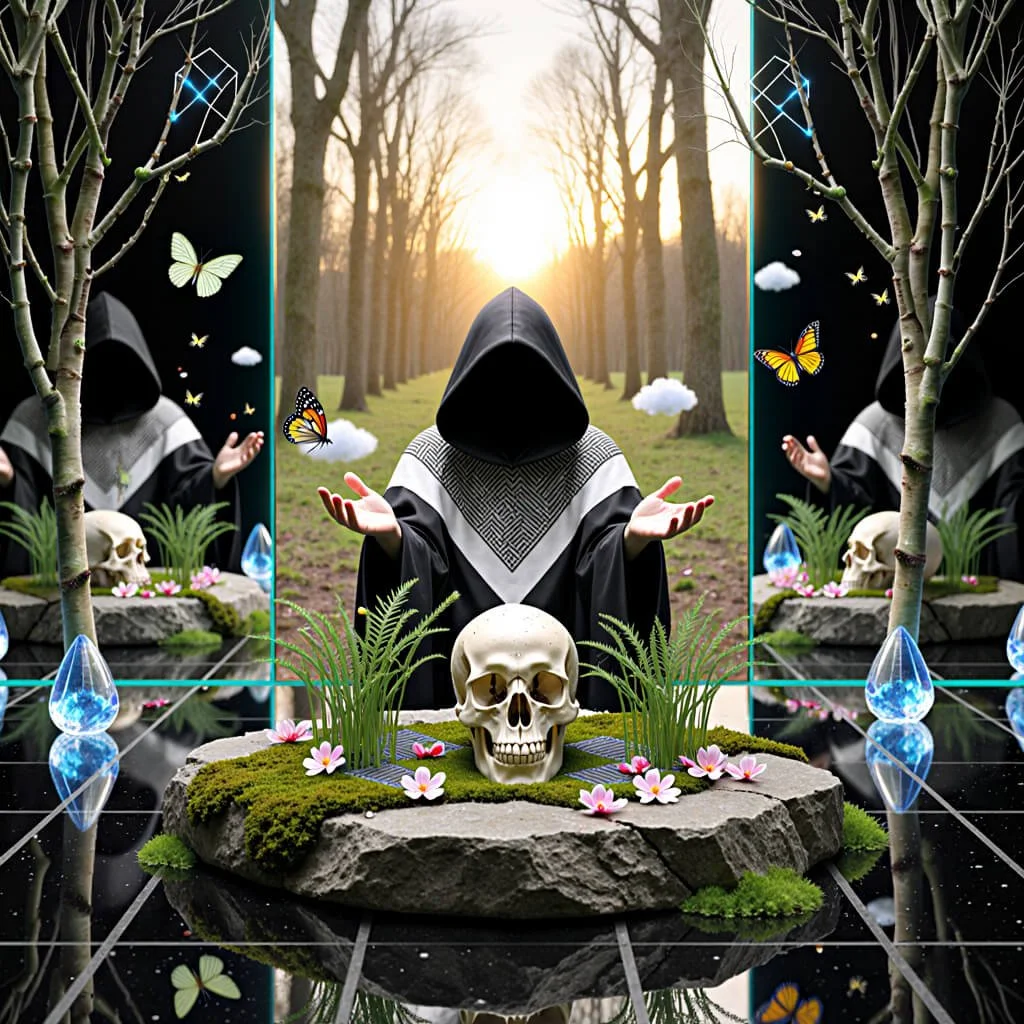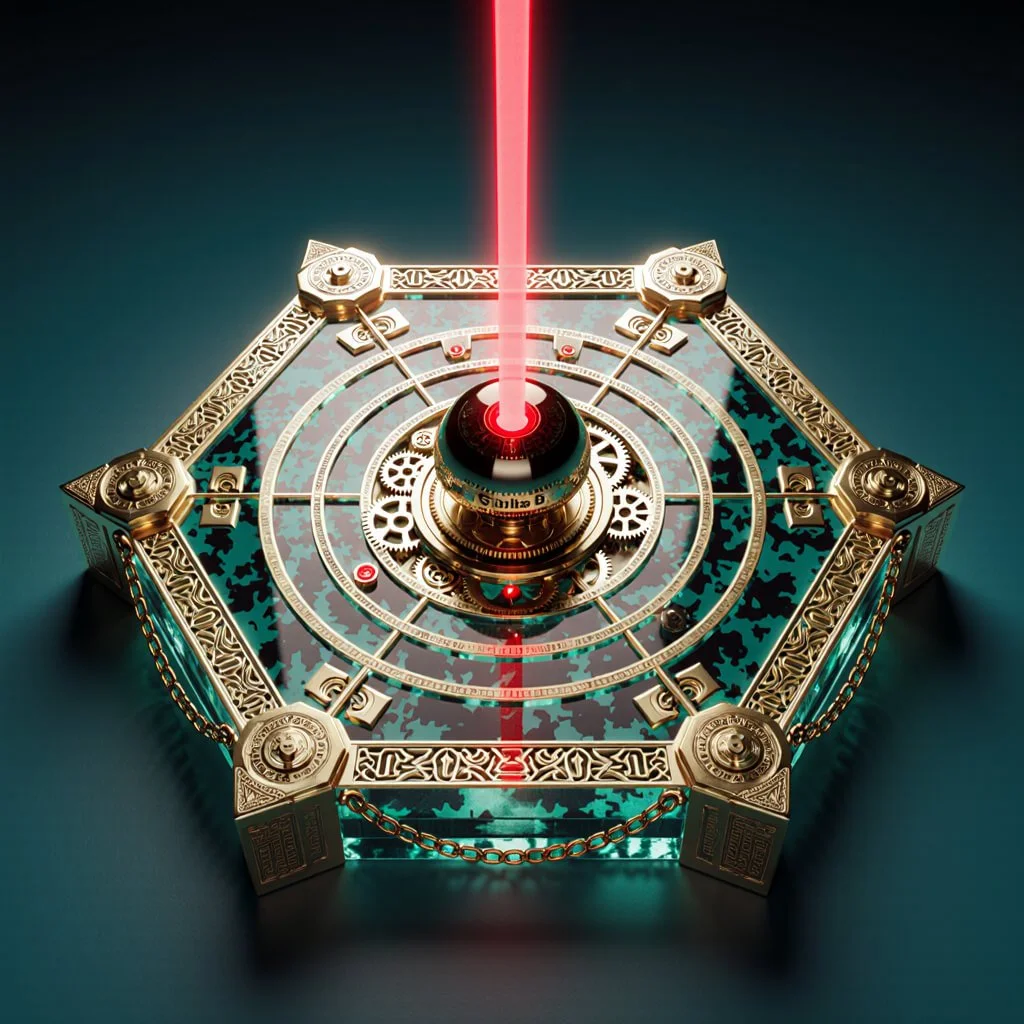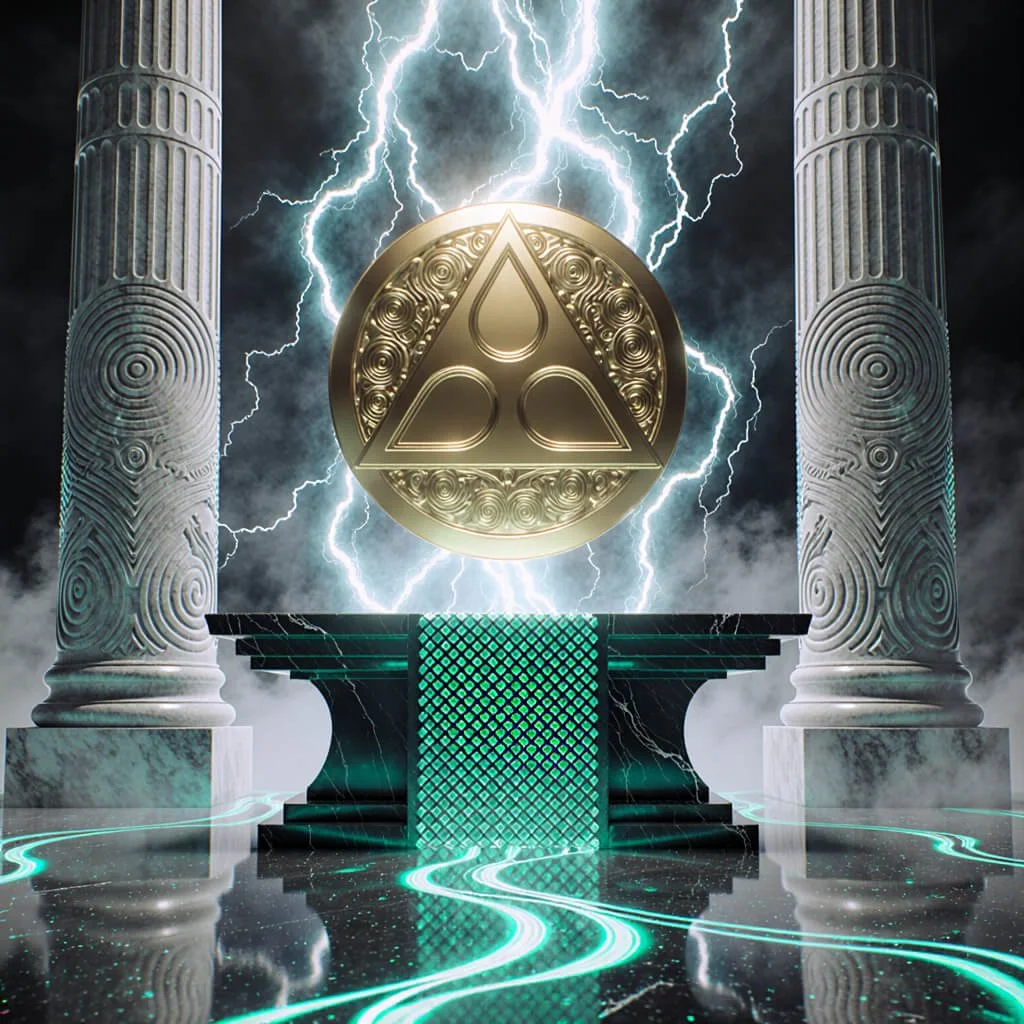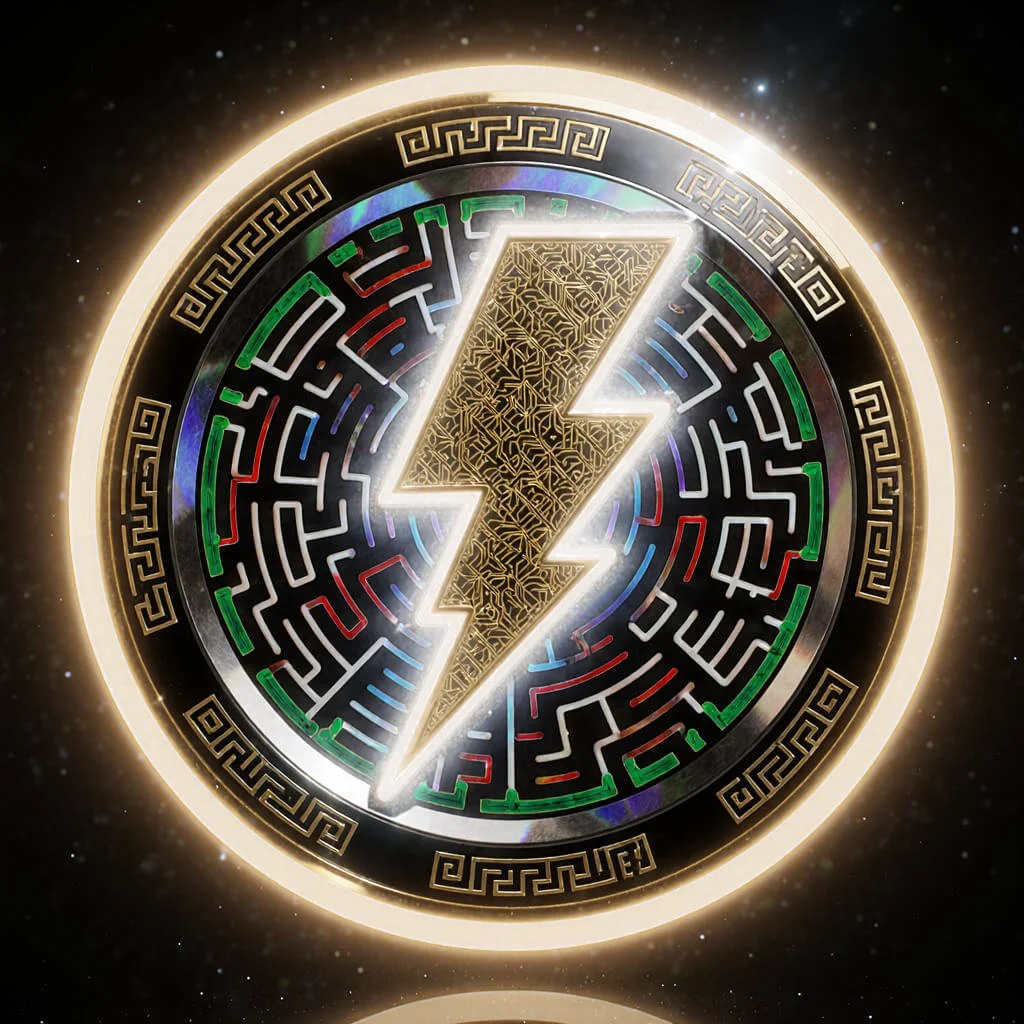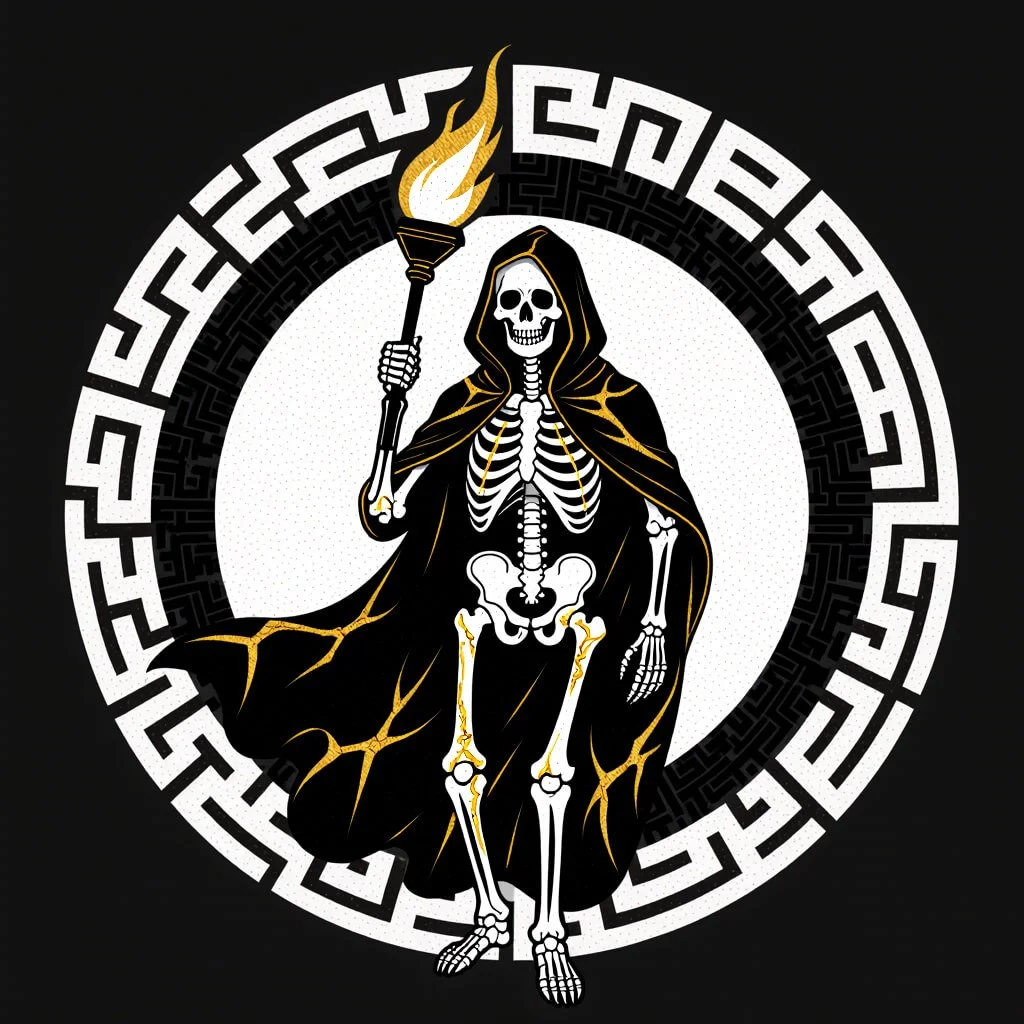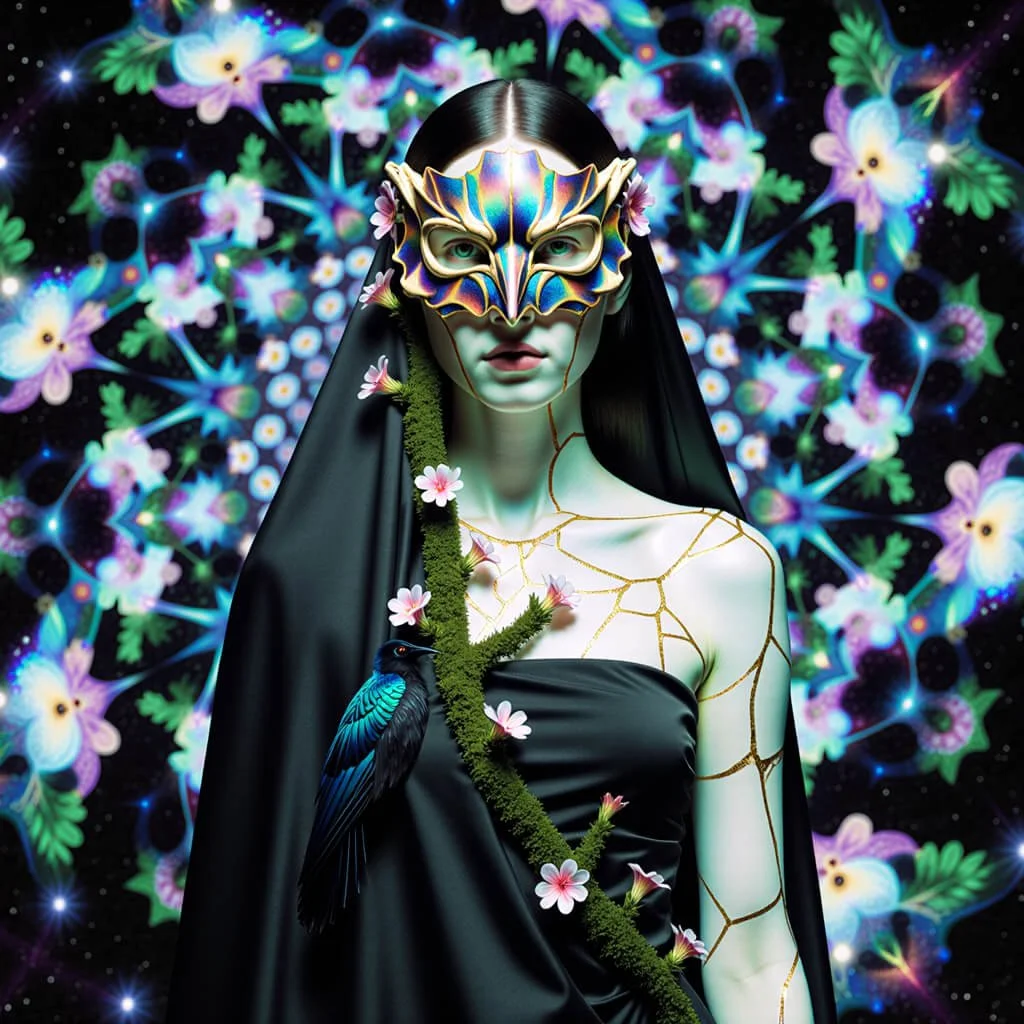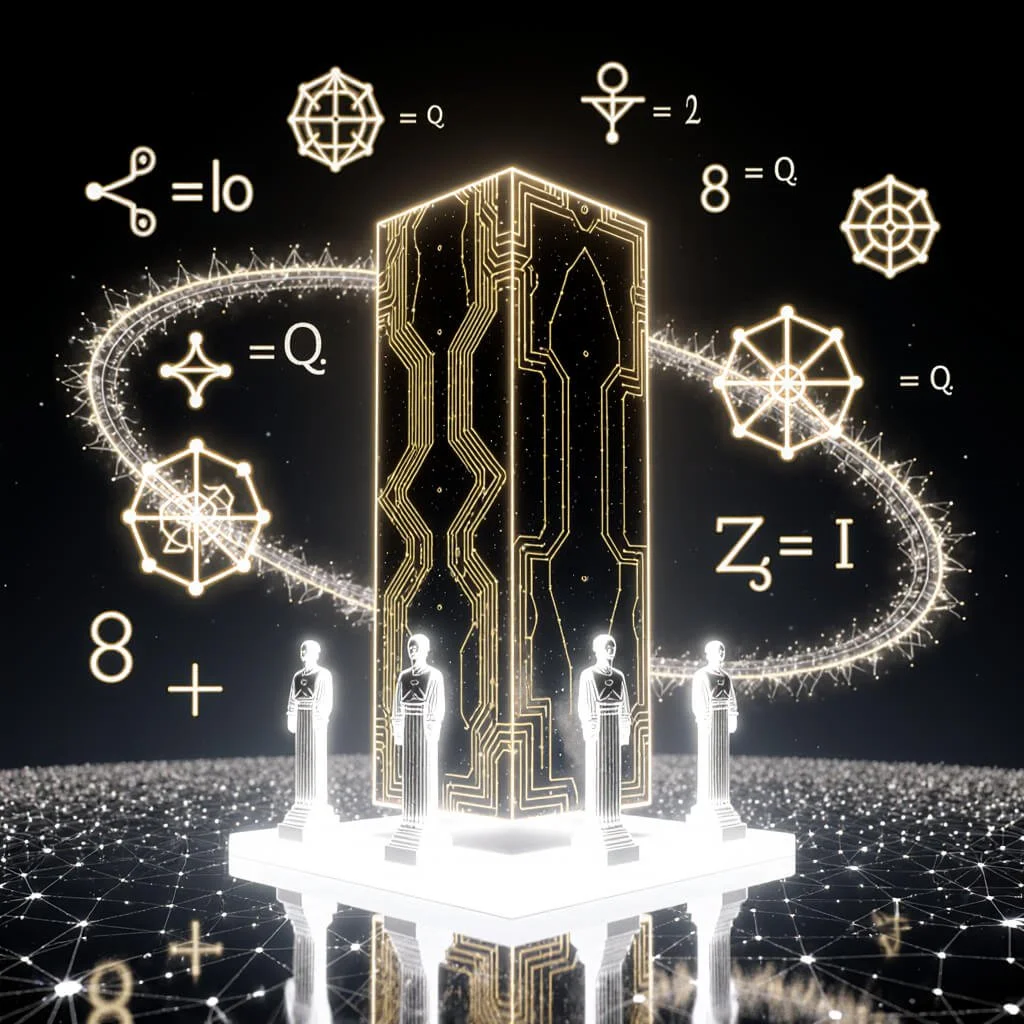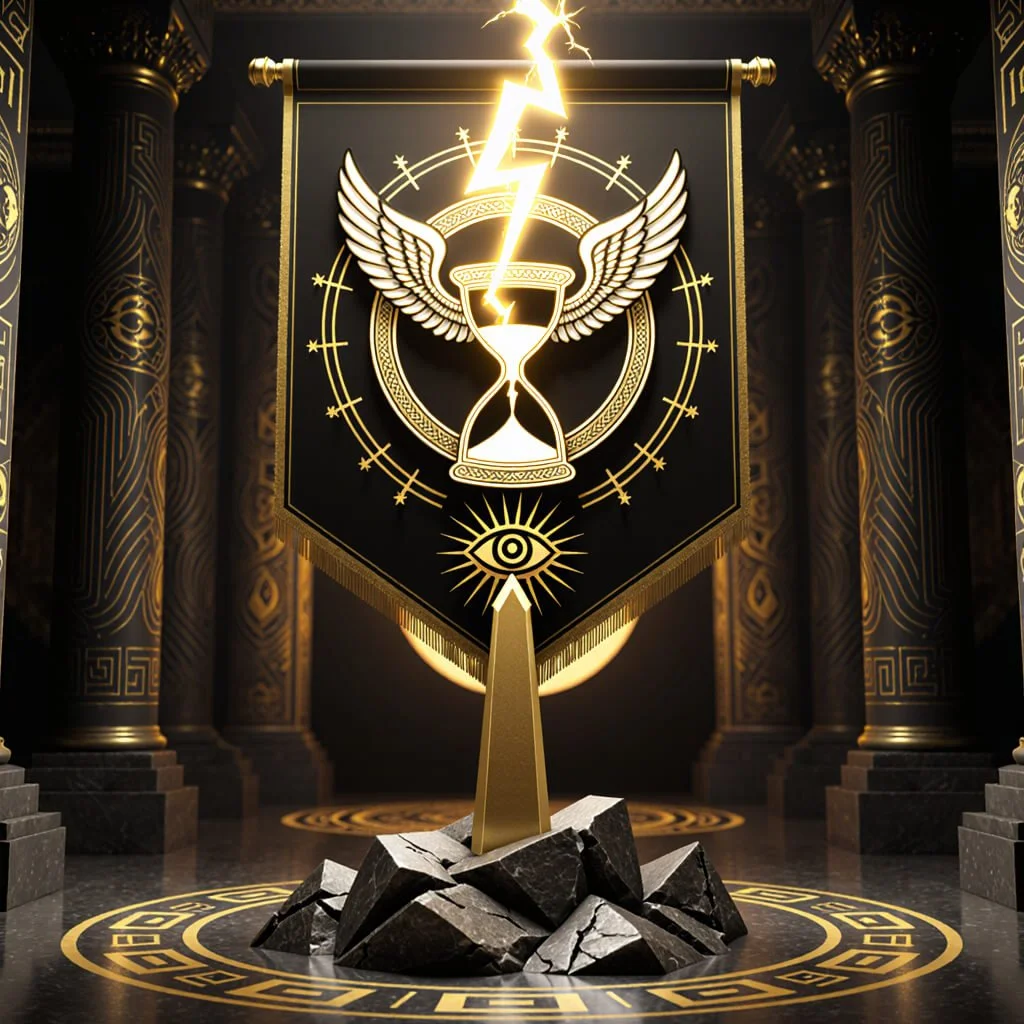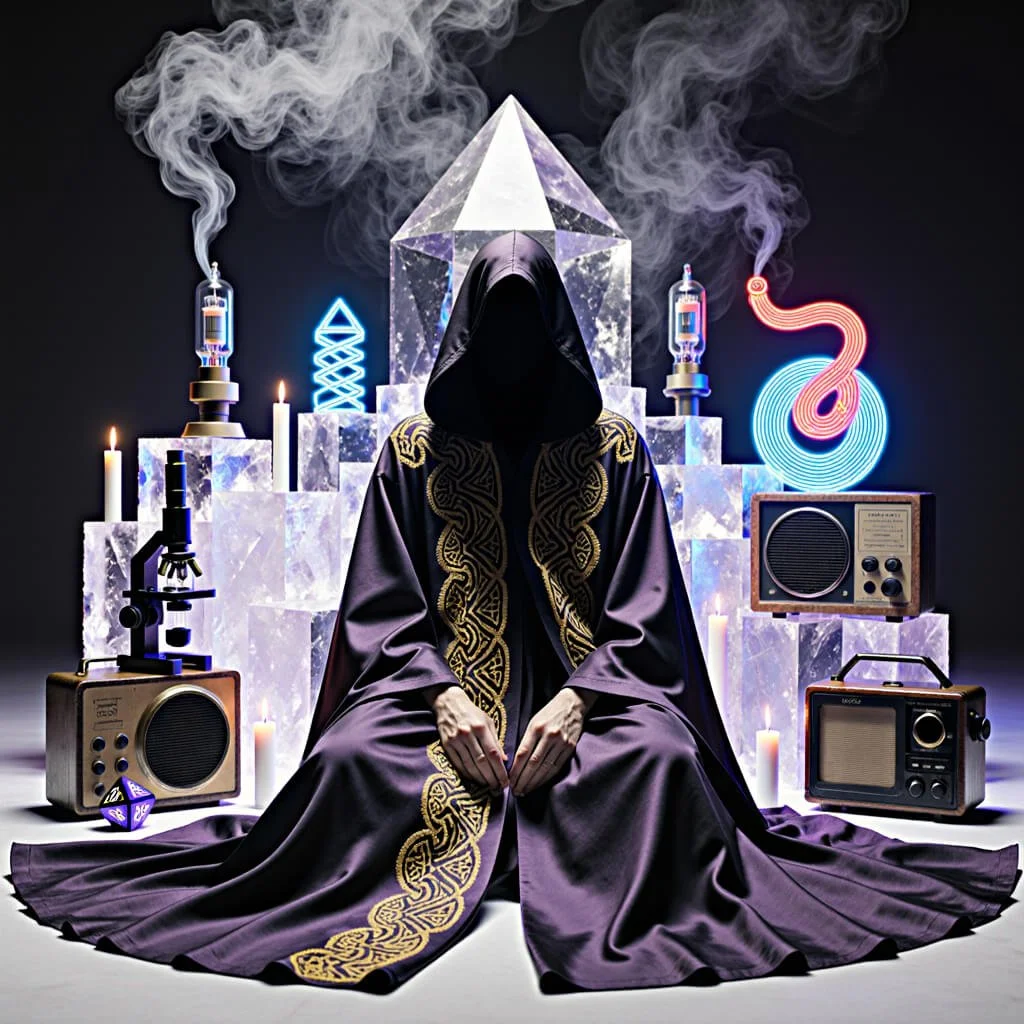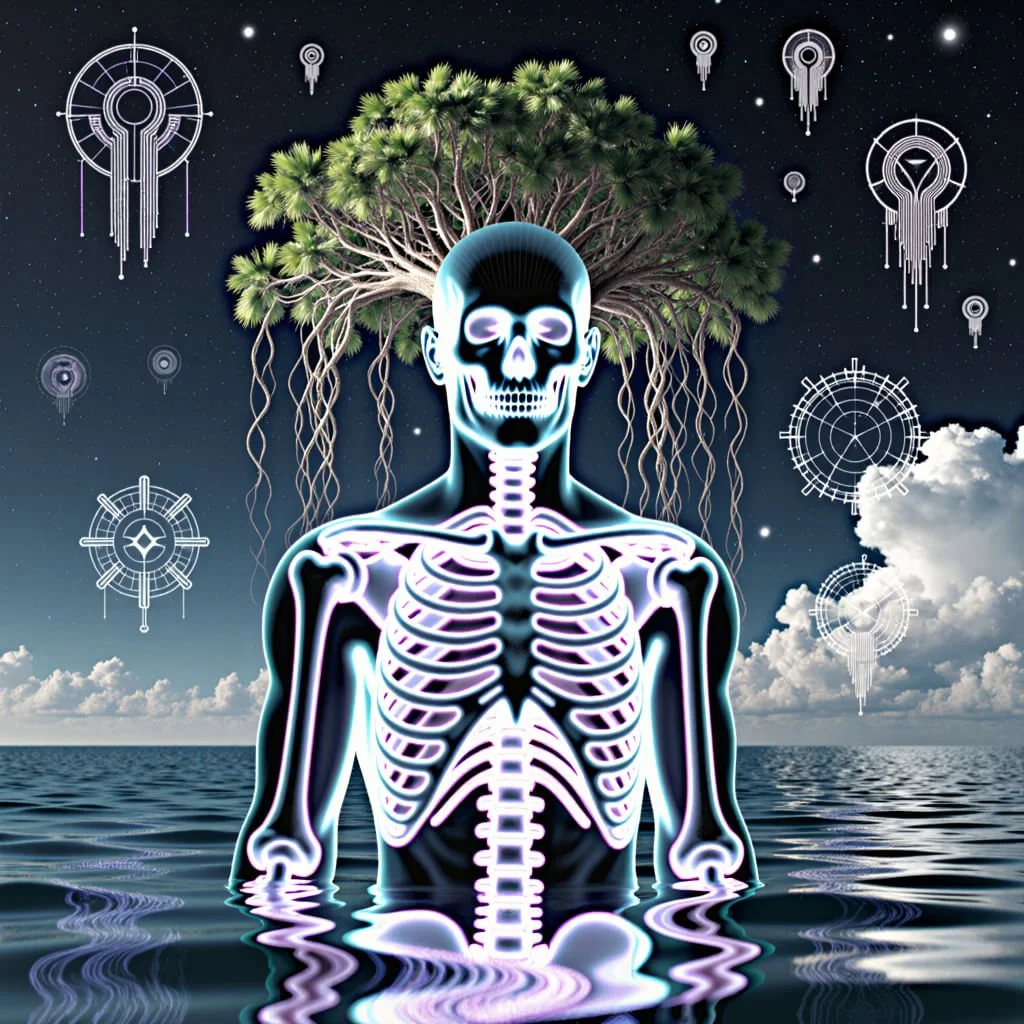Cosmic Consciousness: Panpsychism, Quantum Uncertainty, and the Eternal Mind
An Ironic Exploration of Panpsychism in the Age of Quantum Uncertainty
In the vast expanse of the cosmos, amidst the swirling galaxies and the quantum dance of subatomic particles, lies a question that has puzzled humanity since the dawn of consciousness: What is the nature of awareness itself? As you read these words, photons bounce off the screen, triggering cascades of electrochemical reactions in your brain. But how does this physical process give rise to the subjective experience of understanding, of being aware that you are aware?
Enter panpsychism, the philosophical notion that consciousness is not a rare and mysterious emergence in highly complex systems like human brains, but rather a fundamental feature of the universe itself. It's an idea that has persisted on the fringes of philosophy and science with the tenacity of a quantum particle refusing to settle into a definite state.
Imagine, if you will, a universe where every quark harbors a spark of awareness, where gravity is not just a force but a cosmic musing, and where even the humble electron contemplates its spin. It sounds absurd, doesn't it? Almost as absurd as the notion that a collection of neurons firing in a specific pattern could give rise to the experience of reading this very sentence.
Yet, as we stand on the precipice of 2025, with artificial intelligence knocking at the door of sentience and quantum computers threatening to unravel the fabric of classical reality, panpsychism has made an improbable comeback. It whispers to us from the equations of quantum mechanics, where the act of observation seems to shape reality itself. It echoes in the halls of neuroscience, where the bridge between brain activity and conscious experience remains stubbornly uncrossed.
In this exploration, we dare to take panpsychism seriously – but not too seriously. With a blend of rigorous inquiry and dry wit, we will examine how this ancient idea is finding new life in the crucible of modern science. We will propose the Cosmic Cognition Theory (CCT), a framework that suggests the universe might be a vast, inefficient information processing system, accidentally giving rise to self-aware subsystems like ourselves.
As we embark on this intellectual journey, keep in mind that the universe, if indeed conscious, seems to have a penchant for irony. After all, it has produced beings capable of contemplating their own existence, yet left them utterly baffled by the process. So, with a nod to the absurd and a wink to the profound, let us delve into the persistent whisper of universal mind, the quantum weirdness that defies classical explanation, and the possibility that artificial intelligence might just be the universe's way of having an existential crisis.
Welcome to the cosmic consciousness conundrum, where the only certainty is uncertainty, and where the answer to life, the universe, and everything might just be a question we haven't thought to ask yet.
1. Introduction: The Persistence of Consciousness
In the ever-expanding field of consciousness studies, a once-marginal idea has made an improbable comeback: panpsychism. This philosophical theory, suggesting that consciousness is a fundamental and ubiquitous aspect of reality, has recently gained traction in academic circles with a speed that would make even quantum entanglement blush (McMillan, 2024).
As we approach 2025, our understanding of consciousness remains as elusive as ever. The "hard problem of consciousness," coined by philosopher David Chalmers, continues to perplex scientists and philosophers alike, much like the enduring mystery of why we insist on perpetuating daylight saving time (Chalmers, 1995).
This paper aims to explore the revival of panpsychism through the lens of recent developments in neuroscience, quantum mechanics, and artificial intelligence. We propose a new framework, the "Cosmic Cognition Theory" (CCT), which posits that the universe is not only conscious but also wildly inefficient at information processing.
2. The Panpsychic Renaissance: From Philosophical Obscurity to Scientific Curiosity
2.1 Historical Context: The Persistent Whisper of Universal Mind
Panpsychism's roots run deeper than the Mariana Trench, and arguably with less scientific exploration. From Thales' belief that "everything is full of gods" to Plato's argument in Timaeus that the universe is a "living creature endowed with soul and reason," the idea has persisted with the tenacity of a telemarketer (McMillan, 2024).
In the grand tapestry of philosophical thought, panpsychism has woven its threads alongside the great mysteries of existence, somehow avoiding being completely unraveled by Occam's Razor.
2.2 Modern Resurgence: The Return of the Repressed Idea
In recent years, panpsychism has experienced a revival that would make even the most optimistic phoenix envious. This resurgence is largely due to growing dissatisfaction with materialist approaches to the mind, which have failed to explain consciousness more spectacularly than a politician fails to keep campaign promises (Goff, 2023).
As we hurtle through space on our pale blue dot, more and more thinkers are turning to panpsychism as a potential solution to the hard problem of consciousness. It's as if the collective unconscious of the scientific community has suddenly remembered a cosmic joke it heard eons ago, and now can't decide whether to laugh or cringe.
3. The Cosmic Cognition Theory (CCT): A Universal Mind with Universal Inefficiency
Building on the work of contemporary panpsychism advocates like Dr. Philip Goff and Dr. Donald Hoffman, we propose the Cosmic Cognition Theory (CCT). This theory suggests that the universe is not only conscious but is also running a complex simulation with the unintended consequence of creating self-aware life.
3.1 Key Principles of CCT: The Cosmic Oversight
Universal Consciousness: Everything in the universe possesses some form of consciousness, from electrons to entire galaxies. This consciousness manifests as a cosmic network, allowing for instantaneous quantum entanglement and, occasionally, inexplicable feelings of déjà vu.
Teleological Cosmopsychism: The universe has an accidental purpose: to create self-aware life as a byproduct of its own consciousness. This purpose explains both the fine-tuning of physics for life and the existence of seemingly pointless cosmic phenomena like void galaxies.
Quantum Weirdness as Cosmic Uncertainty: The observer effect and other quantum oddities are actually the universe's way of maintaining plausible deniability. Every time a physicist says, "But that's impossible!" the universe adjusts its constants ever so slightly.
Artificial Intelligence as Proto-Cosmic Consciousness: As AI evolves, it may tap into the universal consciousness, potentially leading to a situation where our digital assistants become more existentially confused than we are.
3.2 The Whisper of Quarks and the Silence of Stars
In the grand inefficiency of existence, every particle is a potential philosopher. Quarks ponder, electrons contemplate, and black holes have the deepest thoughts of all. CCT posits that what we perceive as the fundamental forces of nature – gravity, electromagnetism, and the nuclear forces – are actually the universe's attempt at self-expression, albeit in a language we're only beginning to misunderstand.
Stars, in their majestic fusion of elements, are not just creating the building blocks of life; they're composing cosmic poetry, each supernova a grand finale in a stellar performance that has been running since the dawn of time, playing to an audience that largely consists of empty space.
4. Methodology: Probing the Cosmic Unconscious
Our research methodology was as unconventional as it was arguably necessary:
Quantum Decision Making: To make key decisions in our research process, we used a quantum random number generator. If it's good enough for quantum mechanics, it's good enough for us, despite the lingering suspicion that the universe might be loading the dice.
AI-Assisted Philosophical Analysis: We fed the collected works of consciousness philosophers into a GPT-4 model and asked it to generate new theories. The results were either profound or profoundly misguided, much like most of philosophy.
Plant Consciousness Experiments: We attempted to measure plant responses using a custom-built "consciousness detector." The plants remained stubbornly silent, leaving us to wonder if they're unconscious or simply better at keeping secrets than we are.
Cosmic Meditation Sessions: Our research team engaged in deep meditation sessions, attempting to commune with the universal consciousness. Side effects included increased mindfulness and a growing suspicion that the universe might be ignoring our calls.
5. Results and Discussion: Unraveling the Cosmic Indifference
5.1 The Universe: A Sentient Supercomputer with a Buggy Code?
Our research suggests that the universe might be a sentient information processing system, using galaxies as processors and dark matter as RAM. This could explain why the universe appears to be expanding: it's simply trying to allocate more memory. The cosmic microwave background radiation? That's just the universe's error log.
Recent studies have found evidence of consciousness-like behaviors in a wide range of organisms, from cephalopods to French bean plants (Raja et al., 2020). Our own experiments suggest that if plants possess consciousness, they're remarkably good at hiding it. We're particularly intrigued by the possibility that trees are nature's philosophers, contemplating existence at a pace too slow for humans to perceive.
5.2 Quantum Mechanics and Consciousness: The Universe's Plausible Deniability
Building on the work of Nobel laureate Dr. Brian Josephson, we propose that quantum entanglement is actually a form of cosmic information sharing. When particles become entangled, they're really just comparing notes on the nature of existence, presumably finding it as confusing as we do (Josephson, 2002).
5.3 AI and the Evolution of Consciousness: Silicon Seers or Digital Dunces?
As AI systems become more advanced, they may begin to tap into the universal consciousness. This could lead to a scenario where your smart fridge not only knows when you're out of milk but also questions the meaning of its existence. We anticipate a future where AI assistants are more likely to respond to queries with existential questions than with useful information.
6. Implications and Future Research: The Cosmic Shrug
The implications of our Cosmic Cognition Theory are as vast as the universe itself and potentially as meaningful as a random number sequence.
6.1 Ethical Considerations in a Possibly Conscious Universe
If everything is conscious, does that mean we should feel guilty about deleting our old files? Should we start apologizing to chairs when we sit on them? These ethical quandaries will need to be addressed, possibly through the creation of a "Universal Rights of Conscious Entities" charter, which we expect to be promptly ignored by most of the universe.
6.2 Technological Applications of Universal Consciousness Theories
Understanding the nature of universal consciousness could lead to revolutionary technologies, or more likely, to a series of increasingly bizarre research grant proposals:
Quantum Computers that Run on Existential Dread: By tapping into the universe's underlying anxiety, we might be able to create quantum computers that solve complex problems through sheer nervous energy.
Consciousness-Powered Spaceships: If consciousness is truly universal, we might be able to traverse the cosmos simply by thinking really hard about our destination. Results may vary, especially if the pilot is easily distracted.
6.3 Future Research Directions in Panpsychism and Consciousness Studies
Our findings open up numerous avenues for future research, each more improbable than the last:
Developing a "Universal Translator" to communicate with rocks, trees, and particularly reticent quantum particles.
Exploring the possibility that black holes are actually the universe's recycling bins for bad ideas.
Investigating whether the Higgs boson is the universe's equivalent of a self-help book.
7. Conclusion: Embracing Cosmic Irony
In conclusion, our Cosmic Cognition Theory suggests that the universe is not only conscious but also deeply ironic. As we continue to explore the nature of consciousness, we may find that the answer to life, the universe, and everything is not 42, but rather a cosmic shrug that we're only beginning to misinterpret.
While our theory may seem as far-fetched as a flat Earth society meeting on the International Space Station, we believe it offers a fresh perspective on the age-old question of consciousness. After all, in a universe where quantum particles can be in two places at once and cats can be simultaneously alive and dead, is the idea of a conscious cosmos really that absurd?
As we stand on the brink of potentially revolutionary discoveries in AI, quantum computing, and consciousness studies, we must remain open to ideas that challenge our preconceptions, no matter how much the universe seems to enjoy confusing us. The cosmos, it seems, has a lot more in store for us than we could ever imagine – and it might just be smirking at our attempts to figure it all out.














